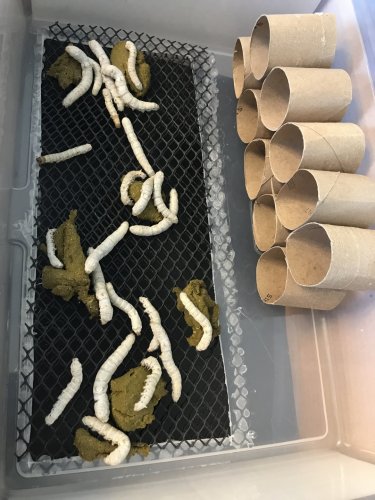Rst_Cham
Chameleon Enthusiast
Hi! This is my first try at breeding silkworms. I'm wondering if the toilet paper rolls for cocooning should be placed in the enclosure horizontal like I have them or vertical? Also, what temperature is best for this stage as they get big and ready to cocoon? I wasn't able to find a bunch of info on this part. Thanks in advance!





